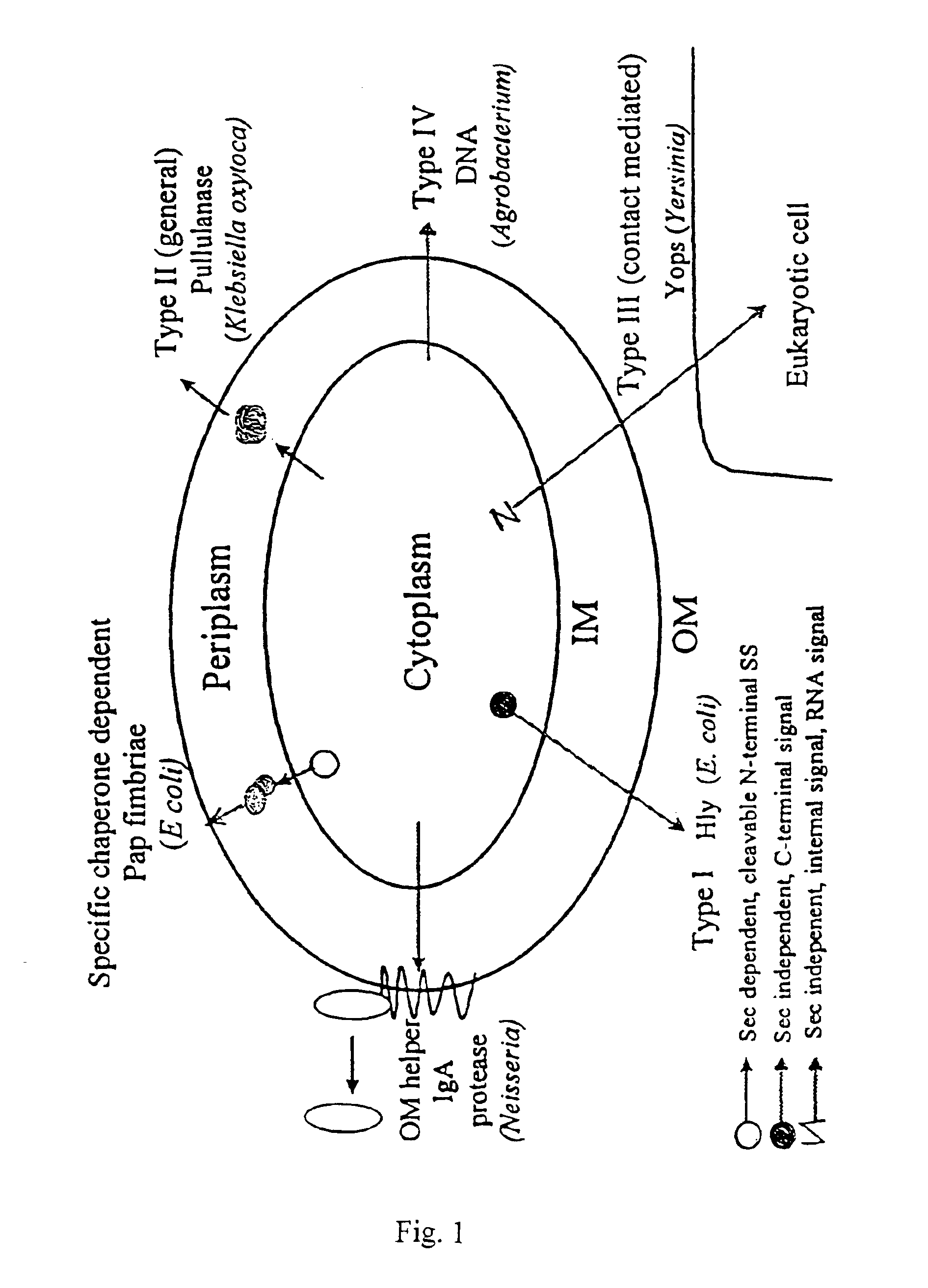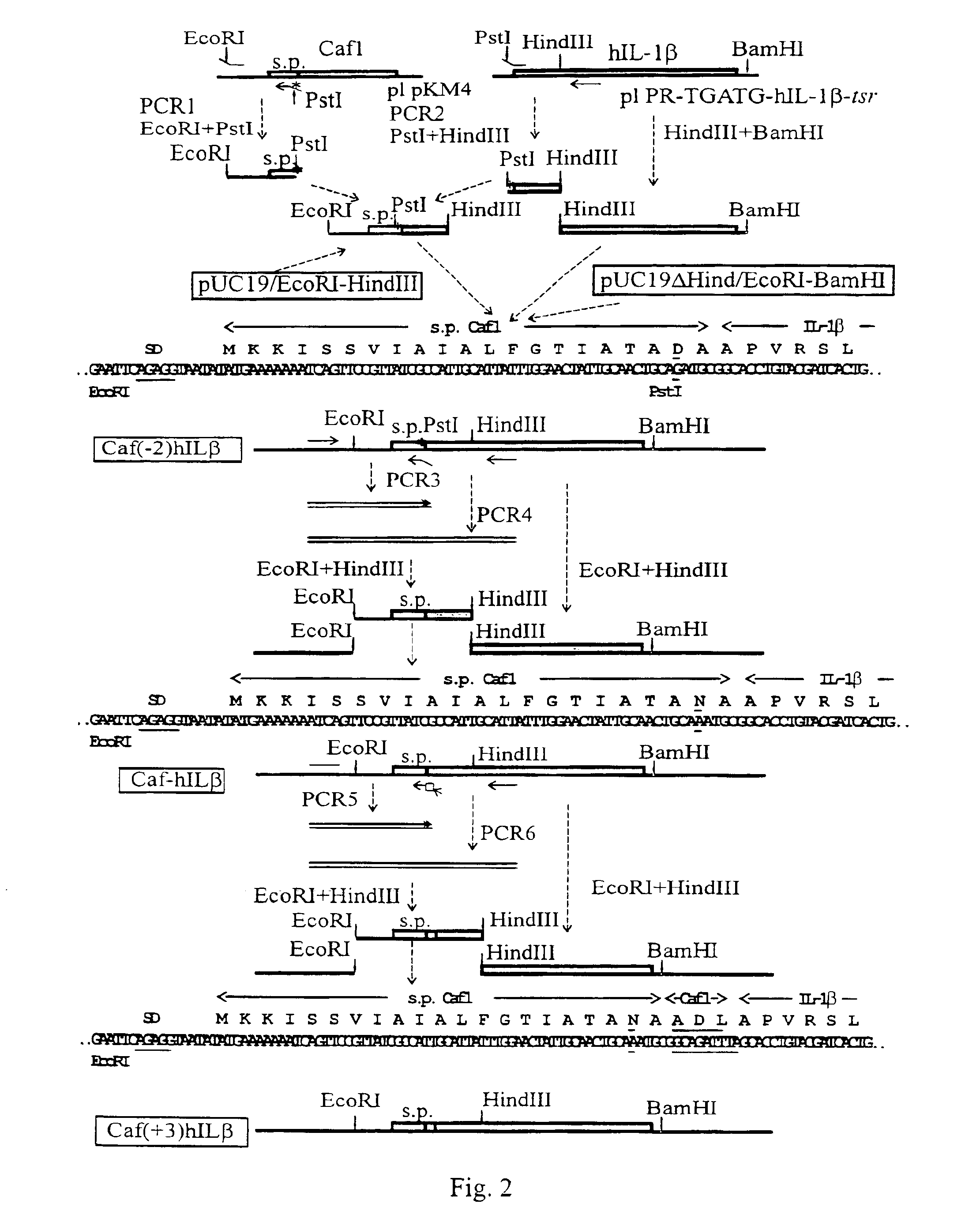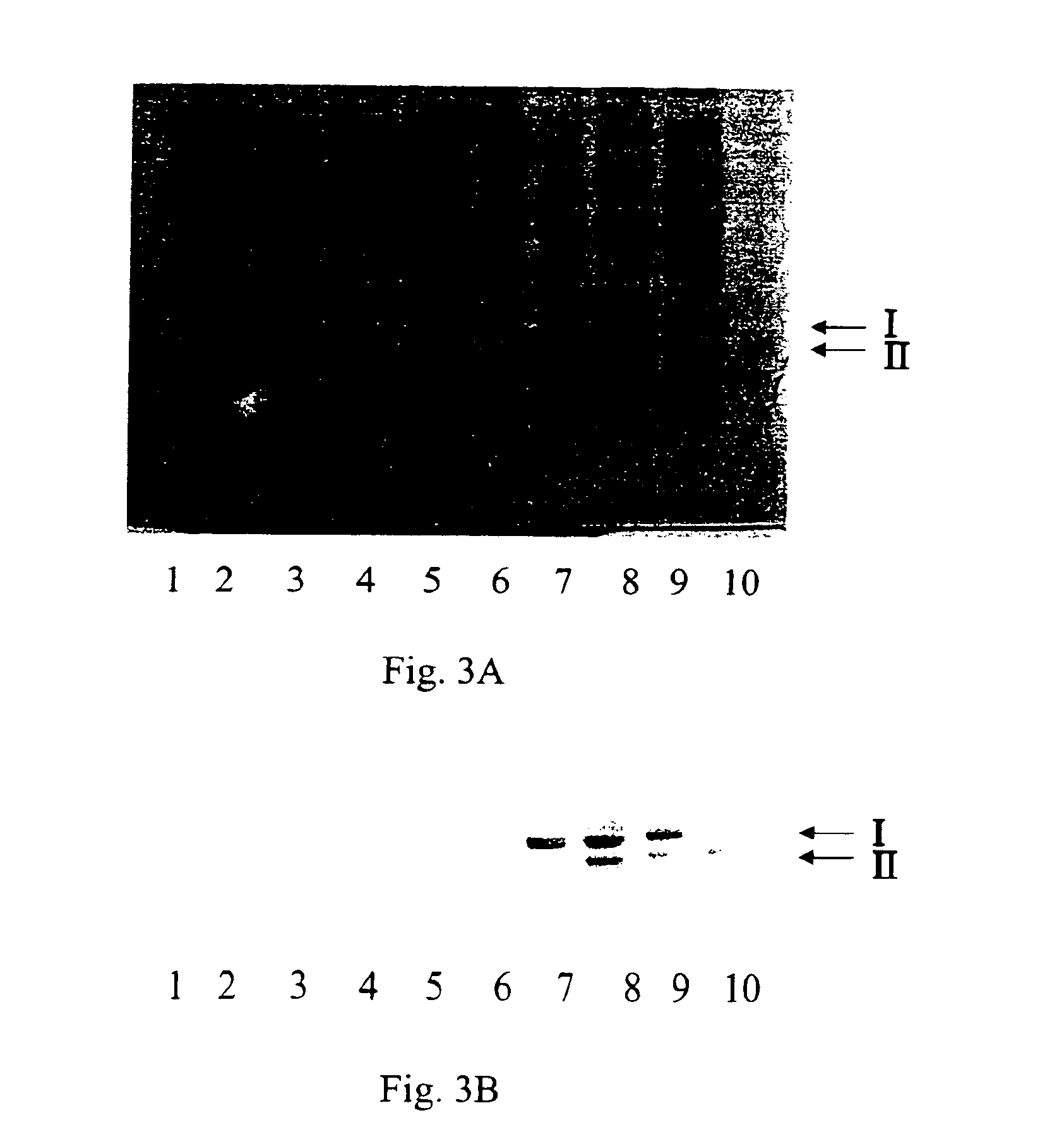Microbial protein expression system
a protein expression and microorganism technology, applied in the field of biotechnology, can solve the problems of no major system for secretion of extracellular products from i>e. coli, incorrect folding, degradation or formation of misfolded proteins as inclusion bodies,
- Summary
- Abstract
- Description
- Claims
- Application Information
AI Technical Summary
Problems solved by technology
Method used
Image
Examples
example i
Fusion or hIL-1β with the Signal Peptide of the Caf1 Protein
[0060]The Caf1 signal peptide (s.p.Caf1) was fused with hIL-1β in three variants (FIG. 2). 1. s.p.Caf1-hIL-1β was the straight fusion where the last amino acid of the Caf1 signal peptide was joint to the first amino acid of hIL-1β. 2. s.p.Caf1(−2)-hIL-1β was the straight fusion with a mutation in the Caf1 signal peptide Asn(−2)Asp. 3. s.p.Caf1(+3)hIL-1β was the fusion containing in the joint region three N-terminal amino acids from mature Caf1 to preserve the natural processing site.
[0061]Here and thereafter DNA manipulations and transformation of E. coli were accomplished according to Maniatis, T., et al. (1989) Molecular Cloning: A Laboratory Manual, 2nd edn., Cold Spring Harbor Laboratory Press, Cold Spring Harbor. Restriction enzymes, mung-bean nuclease, and T4 DNA ligase were purchased from Promega (USA). Taq DNA polymerase (Hytest, Finland) was used for polymerase chain reaction (PCR) experiments. Nucleotide sequencin...
example 2
Fusion of s.p.Caf1(−2)hIL-β with the Caf1 Protein Sequence and Expression of Fused Protein in the Presence of Chaperone and Usher Proteins
[0085]The CIC (s.p.Caf-IL-1β-Caf) protein was designed where the s.p.Caf1(−2)hIL-1β amino acid sequence (N-terminus of the fusion) was linked to the Caf1 protein sequence (C-terminus of the fusion) through a spacer GlyGlyGlyGlySer repeated three times. The spacer was inserted to minimise possible conformational problems of the two proteins fused in CIC.
[0086]The pCIC expression vector was constructed according to the scheme on FIG. 6. The IL part of CIC was obtained by PCR using IL-Pst and IL-BamHI oligonucleotides as primers and the pUC19ΔHindIII / s.p.Caf1(−2)hIL-1β plasmid as a template. The Caf1 part of CIC was obtained by PCR using BamHI-Caf1 and Caf1-SalI oligonucleotides as promers and the pKM4 plasmid as a template. PCR products were digested with restrictases as shown in FIG. 3 followed by triple ligation with the pUC19ΔHindIII / s.p.Caf1(−2)...
example 3
Co-expression of hGMCSF-Caf1 Fusion Protein and the Chaperone
[0096]The expression plasmid for the hGM-CSF-Caf1 fusion protein was based on pFGM13 described in: Petrovskaya L. E. et al. (1995) Russian Journal of Bio-organic Chemistry, 21, 785-791. The pFGM13 plasmid contained a synthetic gene coding for hGMCSF with Caf1 signal sequence (scaf1) cloned into HindIII and XbaI sites of pUC19. Transcription was controlled by the lac promoter and was inducible with IPTG. Translation of the scaf1-gmcsf gene in pFGM13 initiated at the first methionine codon of lacZ gene and utilises its Shine-Dalgarno sequence. A primary structure of the signal sequence (scaf1) encoded by this gene differed from wild-type one at its N-terminus, which contained seven extra residues from β-galactosidase N-terminus.
[0097]The construction of the pFGMF1 plasmid coding for the gmcsf-caf1 gene is shown in FIG. 11. The scaf1-gmcsf gene of pFGM13 was modified for the following cloning of the fragment from pCIC contain...
PUM
| Property | Measurement | Unit |
|---|---|---|
| pH | aaaaa | aaaaa |
| molecular weight | aaaaa | aaaaa |
| optical density | aaaaa | aaaaa |
Abstract
Description
Claims
Application Information
 Login to View More
Login to View More - R&D
- Intellectual Property
- Life Sciences
- Materials
- Tech Scout
- Unparalleled Data Quality
- Higher Quality Content
- 60% Fewer Hallucinations
Browse by: Latest US Patents, China's latest patents, Technical Efficacy Thesaurus, Application Domain, Technology Topic, Popular Technical Reports.
© 2025 PatSnap. All rights reserved.Legal|Privacy policy|Modern Slavery Act Transparency Statement|Sitemap|About US| Contact US: help@patsnap.com



